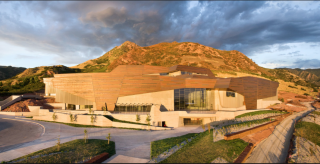Museum Specimen Collection and Preservation
The Natural History Museum of Utah (NHMU) not only houses amazing exhibits for public viewing, but also supports a large contingency of researchers working on many diverse projects. A significant part of museum-based research is growing the number of specimens and overseeing the care of collections.
These collections are snapshots in time of particular ecosystem components. These snapshots can give scientists an informative look into the past that would otherwise not be possible to see.
Follow specimens the from the field to the museum and beyond to better understand their significance in observing biological and physical changes over time.
The Use of Museum Specimens
How do collections aid in research?
Why have more than one specimen?
Why collect specimens and not just take photographs?
Field Work
NHMU mammal researchers are collecting small mammals from the field to compare their findings to earlier collections in similar locations.
Methods of collection and preparation for museum work.
In the Museum

When the specimens reach NHMU from the field, scientists have to prepare and catalog the specimen before storage in the collections room.
Cataloging, storage, and research use